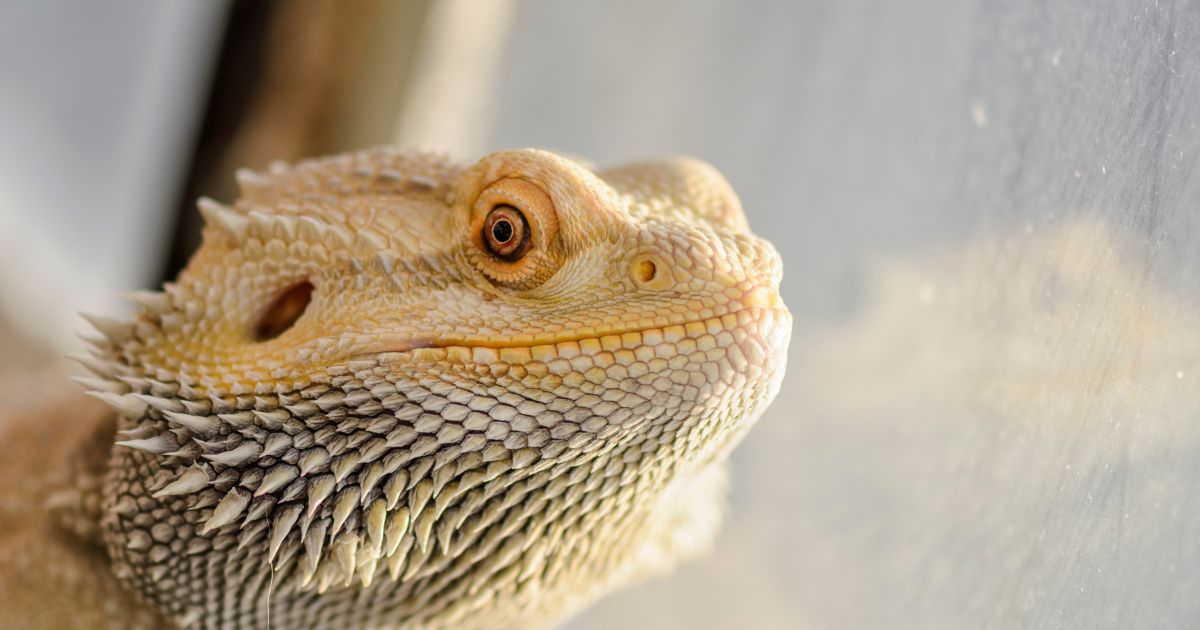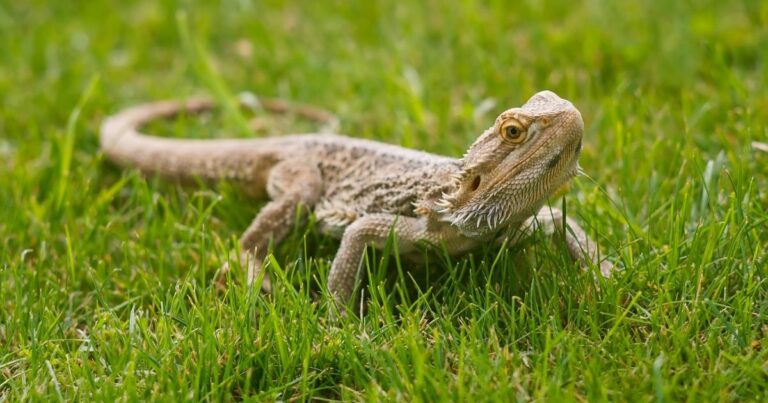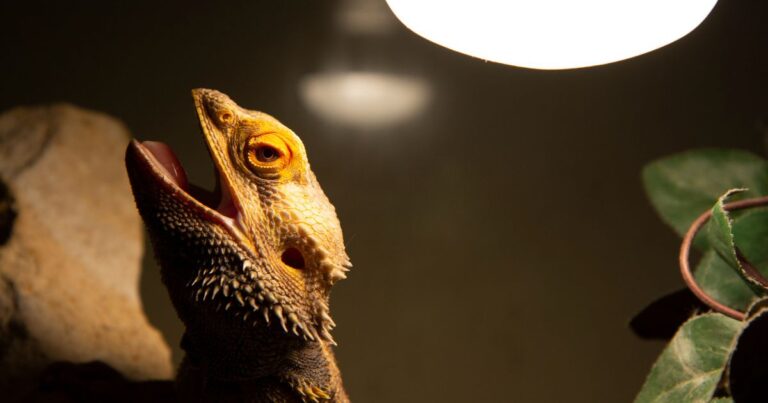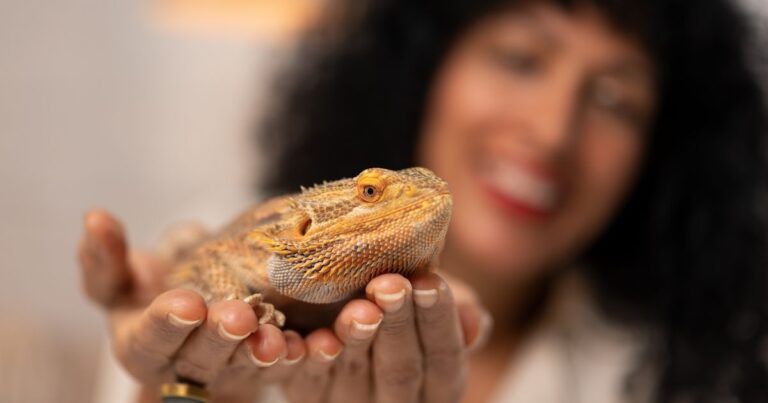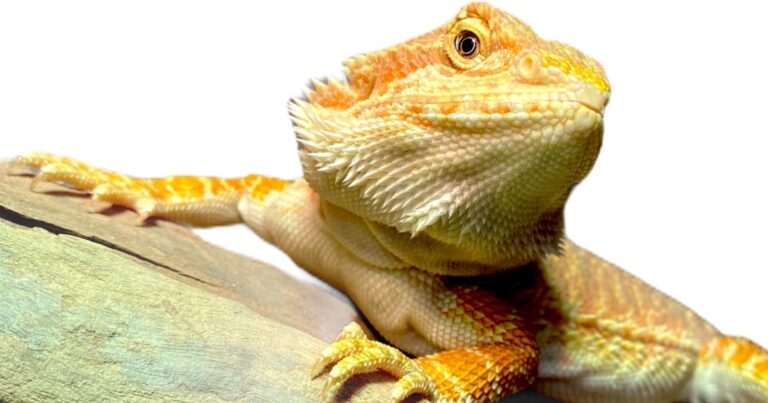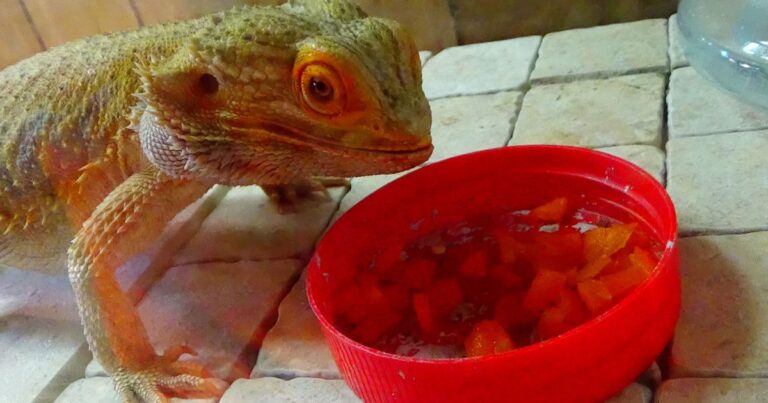Central Bearded Dragon: A Fascinating Journey into Their World
Table of Contents
Ever wondered about the world of the Central Bearded Dragon? These spiky yet soft-hearted creatures are full of surprises! From their unique appearance to their sun-basking habits, join me, Emily Schepers, as we embark on a fascinating journey into their world. Let’s uncover the secrets of these captivating creatures together!
Introduction
The Central Bearded Dragon, a unique and fascinating creature, has captured the hearts of reptile enthusiasts around the world. Known scientifically as Pogona vitticeps, this bearded lizard is a popular pet, admired for its distinctive appearance and intriguing behaviors. As we embark on this journey into the world of the Central Bearded Dragon, we’ll explore everything from its physical characteristics to its lifestyle, diet, and mating habits.
The Central Bearded Dragon is more than just a pet; it’s a creature full of surprises and fascinating facts. The more you learn about them, the more you realize how unique they truly are.
In the world of reptiles, the Pogona vitticeps stands out with its unique charm and captivating personality. These creatures are not just visually striking with their spiky ‘beards’ and expressive eyes, but they also have a calm demeanor that makes them a favorite among reptile enthusiasts. They are a testament to the beauty and diversity of life in the arid landscapes of central Australia. As we delve deeper into the life of the Central Bearded Dragon, you’ll discover why these creatures are so much more than just an interesting face in the reptile world.
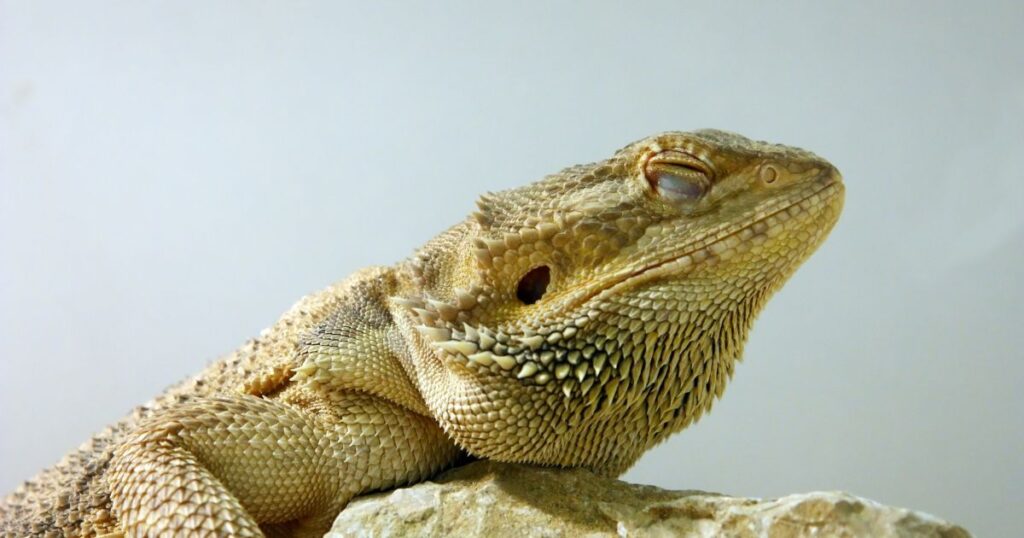
The Central Bearded Dragon is a creature of extremes, thriving in the harsh environments of the Australian outback. They are a testament to the resilience and adaptability of life on our planet. These creatures have evolved to not just survive, but thrive in their native habitats, exhibiting a range of fascinating behaviors and adaptations that make them a truly remarkable species. So, buckle up and get ready for an exciting journey into the world of the Central Bearded Dragon.
Pogona vitticeps Quick Facts
| Fact Category | Details |
|---|---|
| Scientific Name | Pogona vitticeps |
| Common Name | Central Bearded Dragon |
| Lifespan | 8-12 years in captivity |
| Size | 16-24 inches |
| Diet | Omnivore |
| Habitat | Arid, rocky, semi-desert regions |
| Conservation Status | Not Evaluated |
Understanding the Central Bearded Dragon
Top 5 Interesting Facts about Central Bearded Dragons
- Central Bearded Dragons can change the color of their beard to black when they are angry or stressed.
- They are called “bearded” dragons because of the spiky, expandable pouch they have under their throats that looks like a beard.
- Central Bearded Dragons wave their arms at each other in the wild to show recognition.
- They have a third “eye,” known as the parietal eye, on top of their head that senses light and dark.
- Central Bearded Dragons can run on their hind legs to escape predators.
Before we dive into the specifics, let’s get to know the Central Bearded Dragon, also known as the Inland Bearded Dragon or Pogona vitticeps. This species is part of the Agamidae family, a group of lizards known for their ability to change color, their spiny scales, and their adept climbing skills. Central Bearded Dragons are native to the arid, rocky, semi-desert regions and dry open woodlands of central Australia. They are known for their docile nature and the distinctive “beard” of spiky scales around their neck, which can be puffed up as a sign of defense or during courtship rituals.
Let me introduce you to Gilbert, my own Pogona vitticeps. Gilbert has been with me for several years now, and he’s more than just a pet. He’s a companion who has taught me a lot about the unique behaviors and needs of Central Bearded Dragons. From his basking habits to his diet, observing Gilbert has given me a deeper understanding of this fascinating species. In the following sections, I’ll share some of the insights I’ve gained from my time with Gilbert, and hopefully, help you appreciate the unique charm of Central Bearded Dragons.
In their native Australia, Central Bearded Dragons are found in a variety of habitats, from the arid deserts of the interior to dry open woodlands. These environments may seem harsh to us, but to the Central Bearded Dragon, they are home. These lizards are perfectly adapted to their surroundings, with behaviors and physical traits that allow them to thrive in these challenging conditions. From their distinctive appearance to their intriguing behaviors, every aspect of the Pogona vitticeps tells a story of survival and adaptation.
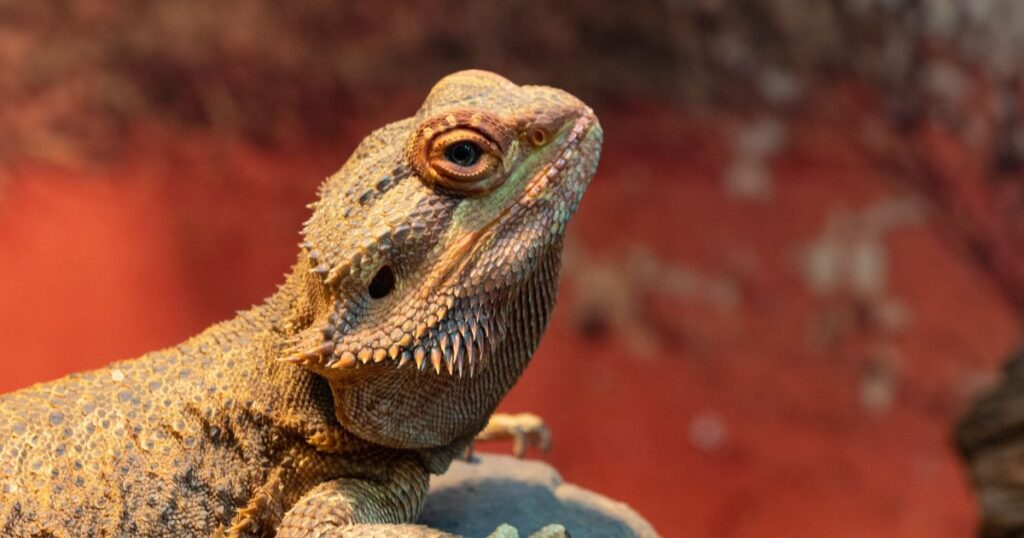
What Sets the Central Bearded Dragon Apart?
The Central Bearded Dragon, scientifically known as Pogona vitticeps, is one of the several species of bearded dragons. But what sets it apart from its relatives? Well, let’s delve into the unique characteristics of the Central Bearded Dragon that make it stand out among the other species.
Firstly, the Central Bearded Dragon is the most common species of bearded dragon to be kept as a pet. This is largely due to its docile nature and relatively easy care requirements. They are known for their distinctive “beard” of spiky scales around their neck, which can be puffed up as a sign of defense or during courtship rituals. This feature is more pronounced and noticeable in the Central Bearded Dragon than in other species.
Secondly, the Central Bearded Dragon is larger than most of its relatives. They typically reach lengths of 16 to 24 inches from head to tail, making them one of the larger species of bearded dragons. Their size, combined with their unique physical characteristics, makes them a favorite among reptile enthusiasts.
Now, let’s take a look at how the Central Bearded Dragon compares to other species in terms of habitat and diet.
Habitat Comparison
| Species | Native Habitat |
|---|---|
| Central Bearded Dragon (Pogona vitticeps) | Arid, rocky, semi-desert regions and dry open woodlands of central Australia |
| Eastern Bearded Dragon (Pogona barbata) | Woodlands, scrublands, and Eucalyptus forests in eastern Australia |
| Western Bearded Dragon (Pogona minor) | Semi-arid woodland and desert in Western Australia |
Diet Comparison
| Species | Diet |
|---|---|
| Central Bearded Dragon (Pogona vitticeps) | Omnivorous, eating a mix of insects, small rodents, and vegetation |
| Eastern Bearded Dragon (Pogona barbata) | Omnivorous, with a preference for insects |
| Western Bearded Dragon (Pogona minor) | Primarily insectivorous, but will eat vegetation |
As you can see, while there are similarities among the species, the Central Bearded Dragon has its own unique traits that set it apart. Whether it’s their distinctive appearance, their larger size, or their specific habitat and diet preferences, the Pogona vitticeps is truly a unique member of the bearded dragon family.
Central Bearded Dragon’s Appearance
The Central Bearded Dragon, with its unique appearance, is a sight to behold. I still remember the first time I held one of these fascinating creatures. Its spiky, beard-like scales, which give the creature its name, felt surprisingly soft against my skin. The dragon’s eyes, a captivating blend of intelligence and curiosity, seemed to observe me as much as I was observing it. This encounter was a vivid reminder of the unique physical characteristics that make the Central Bearded Dragon such a fascinating creature to study and care for.
These creatures are medium-sized lizards, typically reaching lengths of 16 to 24 inches from head to tail. They have broad, triangular heads and flat bodies with pointed ridges along the sides. Their color can vary from light tan to dark brown, often with darker patterns on their back and tail. This coloration, along with their distinctive scales, not only adds to their unique appearance but also helps them blend into their arid surroundings. Every time I look at a Central Bearded Dragon, I’m reminded of that first encounter and the sense of wonder it instilled in me.
One of the most distinctive features of the Central Bearded Dragon is its ‘beard’ – a spiky collar of scales around its neck that can be puffed up when the dragon feels threatened or during courtship displays. This beard, combined with their broad, triangular head, gives them a distinctive silhouette that is instantly recognizable. Their eyes, often a mesmerizing mix of gold and brown, are expressive and seem to sparkle with a curious intelligence. Each feature of the Central Bearded Dragon’s appearance contributes to its unique charm and character.
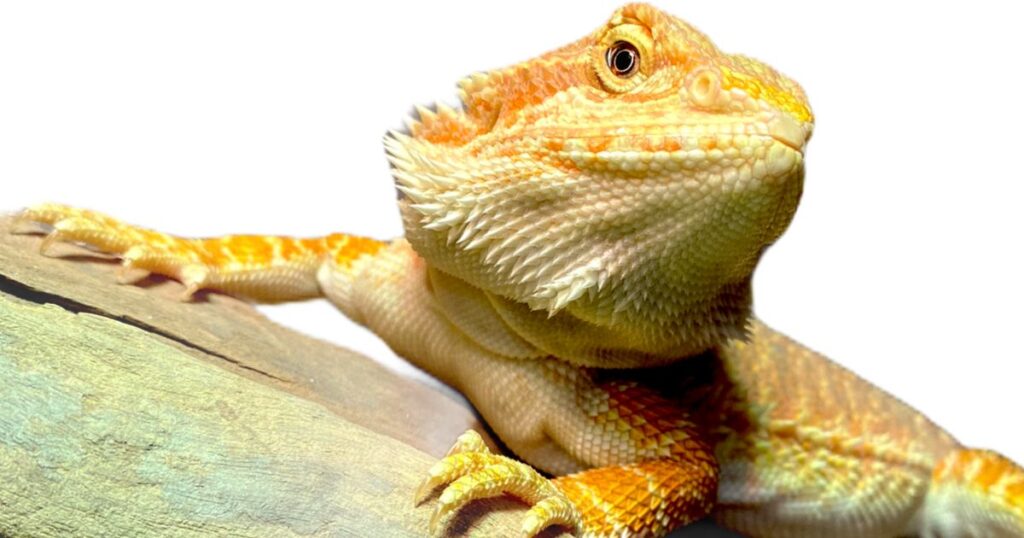
The “rim” or “eyelid” around the eye is a common feature among all species of bearded dragons, including the Central Bearded Dragon. This feature is a scale-covered, immovable eyelid that provides protection to the eye. Unlike humans and some other animals, bearded dragons cannot blink because their eyelids are fused. Instead, they have a transparent scale, or spectacle, that covers the eye to protect it and keep it moist.
The prominence and color of this rim can vary among individual bearded dragons due to factors like age, health, and color morph. Some bearded dragons may have a more noticeable rim around their eyes, while others may not. It’s also worth noting that the color of this rim can change during shedding or when the bearded dragon is displaying certain behaviors.
Distribution and Habitat
Central Bearded Dragons are true children of the Australian outback. They are found across a wide range of habitats in central Australia, from arid deserts to dry woodlands. These environments may seem inhospitable to us, but they are the perfect home for the Pogona vitticeps. These lizards are well-adapted to the harsh conditions of their native habitats, with physical and behavioral traits that allow them to thrive in these challenging environments.
One of the key adaptations of the Central Bearded Dragon is its ability to regulate its body temperature by basking in the sun. These lizards are often found perched on rocks or branches, soaking up the sun’s rays to warm their bodies. This behavior is not just about enjoying a good sunbath – it’s a crucial part of their survival strategy. By basking in the sun, Central Bearded Dragons can raise their body temperature to optimal levels for hunting, digestion, and other vital functions. This is just one of the many ways that these remarkable creatures have adapted to thrive in their native habitats.
Central Bearded Dragon Habitat Requirements
| Habitat Aspect | Requirement |
|---|---|
| Temperature | 95-110°F (basking spot), 75-85°F (cool side) |
| Humidity | 20-40% |
| Lighting | UVB light required |
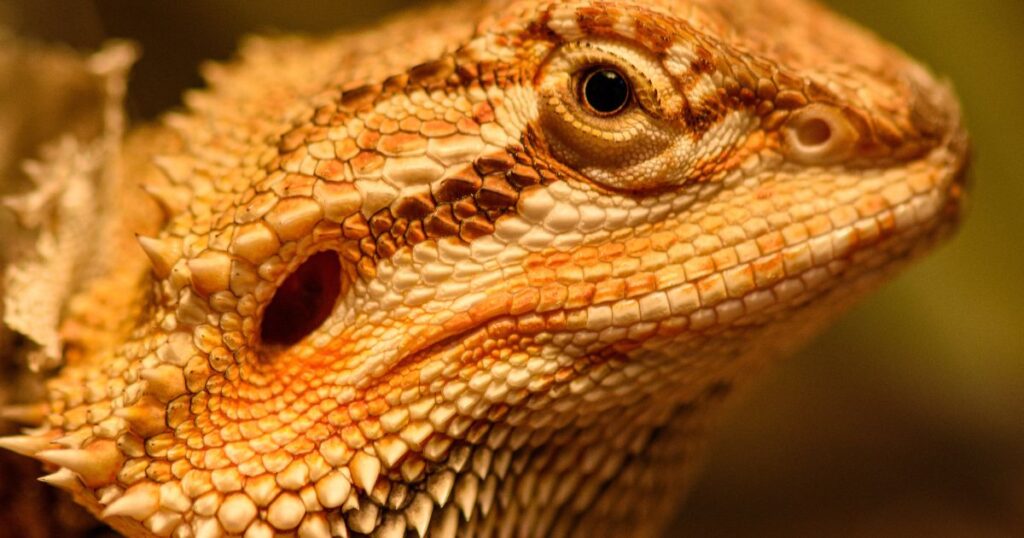
Habits and Lifestyle
The Central Bearded Dragon’s daily habits and lifestyle are a testament to its adaptability and survival skills. One of my most memorable experiences with a Central Bearded Dragon was observing its basking behavior. It was a sunny day, and the dragon was perched on a rock, positioning itself to maximize sun exposure. This behavior, which is crucial for thermoregulation and digestion, was fascinating to observe.
Watching the dragon bask in the sun, I was reminded of the importance of sunlight in their lives. They are cold-blooded creatures, relying on external heat sources to regulate their body temperature. This basking behavior is not just a habit, but a necessity for their survival. This observation was a powerful reminder of the dragon’s adaptability and the importance of replicating their natural habitat as closely as possible in captivity. It’s these unique behaviors and habits that make the Central Bearded Dragon such a fascinating creature to study and care for.
One of the most fascinating aspects of the Central Bearded Dragon’s lifestyle is its communication methods. These creatures are known to communicate through a series of gestures, including arm-waving, head-bobbing, and beard-flashing. Each of these behaviors has a specific meaning, ranging from submission to aggression, and plays a crucial role in their social interactions.
Diet and Nutrition
As an opportunistic omnivore, the Central Bearded Dragon has a diverse diet that plays a crucial role in its health and survival. In the wild, these creatures feed on a variety of insects, small rodents, lizards, and plant matter. Their diet includes crickets, mealworms, and other small invertebrates, as well as leaves, flowers, and fruits.
In captivity, it’s important to replicate this varied diet to ensure your bearded dragon gets all the nutrients it needs. A balanced diet for a Central Bearded Dragon might include a mix of live insects, fresh vegetables, and occasional fruits. It’s also crucial to provide a source of calcium, often in the form of a supplement, to support their bone health.
Central Bearded Dragon Diet
| Food Type | Examples |
|---|---|
| Insects | Crickets, mealworms, kingworms |
| Vegetables | Collard greens, bell peppers, peas |
| Fruits | Apples, peaches, bananas |
Mating Habits and Reproduction
The mating habits and reproduction cycle of the Central Bearded Dragon are fascinating aspects of its life history. Over the years, I’ve learned that Central Bearded Dragons have a unique mating system known as polygyny, where one male mates with multiple females. This was a surprising discovery, as it challenged the common assumption that reptiles are solitary creatures.
Common Mistakes to Avoid When Caring for a Central Bearded Dragon
- Not providing enough UVB light, which is essential for their health.
- Feeding them a diet low in calcium, which can lead to metabolic bone disease.
- Using a loose substrate like sand or gravel, which can cause impaction if ingested.
- Not providing enough temperature gradient in their habitat.
- Neglecting regular vet check-ups.
This revelation about their mating habits was not just surprising, but also enlightening. It gave me a deeper understanding of their social dynamics and reproductive behaviors. It’s these insights that have helped me provide better care for these fascinating creatures. From their courtship displays to their nesting behaviors, every aspect of their reproduction is a testament to their adaptability and survival skills. It’s these unique behaviors that make the Central Bearded Dragon such a captivating creature to study and care for.
During the breeding season, male Central Bearded Dragons will display a range of behaviors to attract females, including head bobbing, beard darkening, and even some aggressive nudging. Once the female accepts the male’s advances, she will lay a clutch of up to 24 eggs, which she buries in a shallow nest. The eggs will incubate for around two months before hatching.
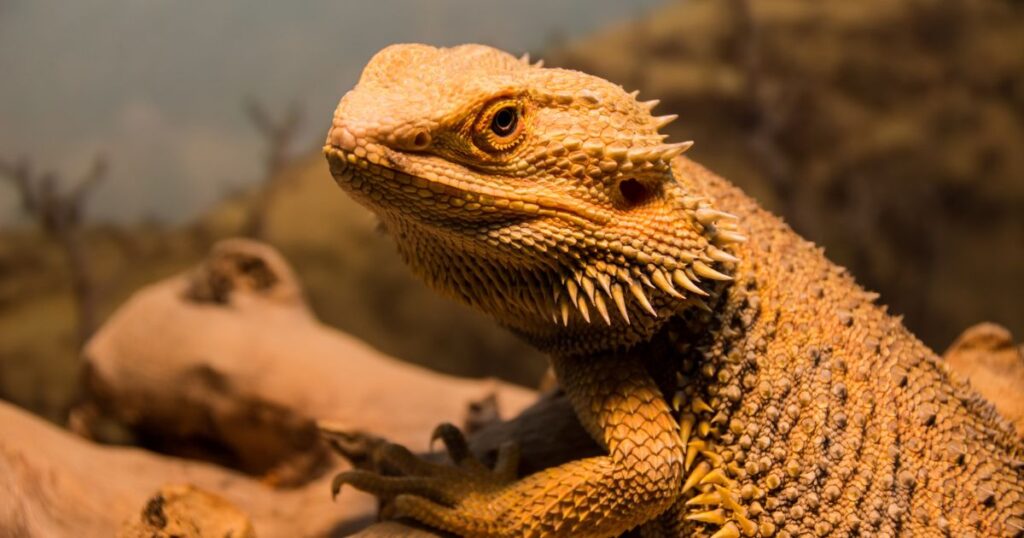
Population Status and Threats
Despite being a common species, the Central Bearded Dragon faces several threats that could impact its population. Habitat loss due to urban development and agriculture is a significant concern, as it reduces the availability of suitable nesting and basking sites. Additionally, these creatures are often collected from the wild for the pet trade, which can put pressure on wild populations.
However, in many parts of their range, Central Bearded Dragons are protected by law, and collection from the wild is regulated. In captivity, they breed readily, which helps meet the demand for pets and reduces pressure on wild populations. Despite these threats, the Central Bearded Dragon is currently listed as a species of “Least Concern” by the International Union for Conservation of Nature (IUCN), indicating that it is not currently at significant risk of extinction.
Fun Facts
Beyond the basics, there are some fun and interesting facts about the Central Bearded Dragon that make it a truly unique creature. For instance, did you know that the ‘beard’ in their name comes from their ability to puff out the skin under their throat when they are threatened or during mating displays? This beard can even change color, usually turning black, which can be quite a sight to behold!
Here are a few more intriguing facts about the Central Bearded Dragon:
- They have a third ‘eye.’ This is actually a photosensitive spot on the top of their head known as the parietal eye. It doesn’t see images but can detect changes in light and dark, helping them sense predators from above.
- They can change their color to regulate their body temperature. Lighter colors reflect sunlight, while darker colors absorb it.
- They have a unique way of waving ‘hello.’ Juvenile and female bearded dragons are known to perform a slow, rhythmic waving of one front leg as a submissive gesture.
These fun facts not only make the Central Bearded Dragon an interesting pet but also highlight the complexity and wonder of these creatures.
Caring for a Central Bearded Dragon is not just about providing food and a place to live. It’s about creating an environment that mimics their natural habitat as closely as possible and understanding their unique behaviors and needs.
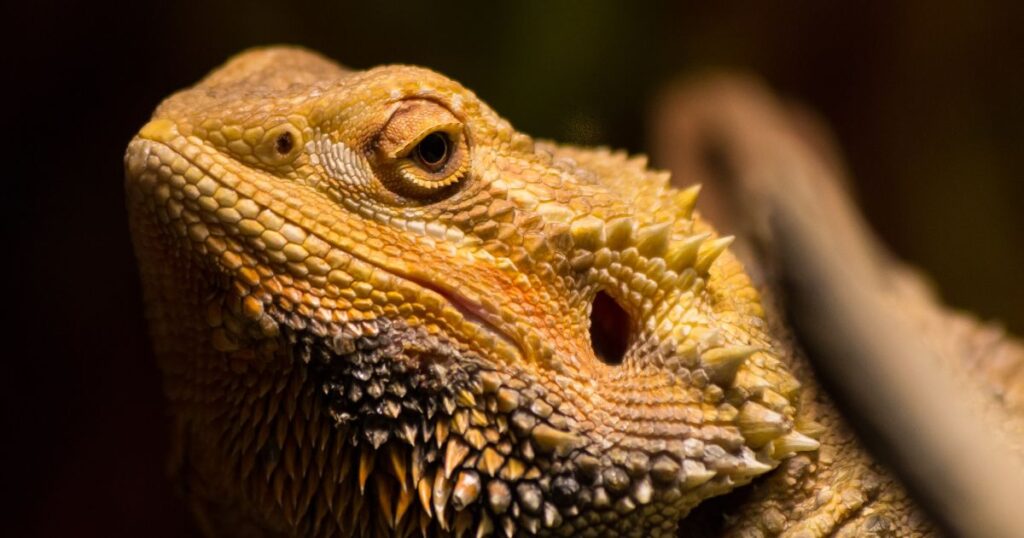
Conclusion
The Central Bearded Dragon is more than just a pet; it’s a creature full of surprises and fascinating facts. From their unique physical characteristics to their intriguing behaviors, every aspect of their life is a testament to their adaptability and survival skills. Whether you’re a seasoned herpetologist or a curious newcomer, the world of the Pogona vitticeps offers endless opportunities for discovery and learning.
As we journey into the world of the Central Bearded Dragon, we come to appreciate not only its unique qualities but also the broader lessons it offers about nature’s diversity and resilience. These creatures remind us of the wonders of the natural world and our responsibility to protect and preserve it.
What is a Central Bearded Dragon?
A Central Bearded Dragon is a species of lizard native to the arid, rocky, semi-desert regions and dry open woodlands of central Australia. Known scientifically as Pogona vitticeps, it’s a popular pet due to its docile nature and unique appearance.
How did the Central Bearded Dragon get its name?
The Central Bearded Dragon gets its name from the spiky, beard-like scales around its neck. When threatened or during courtship rituals, the dragon can puff up this “beard,” making it appear larger and more intimidating.
What does a Central Bearded Dragon look like?
Central Bearded Dragons are medium-sized lizards, typically reaching lengths of 16 to 24 inches from head to tail. They have broad, triangular heads, flat bodies, and pointed ridges along the sides. Their color can vary from light tan to dark brown, often with darker patterns on their back and tail.
What does a Central Bearded Dragon eat?
As opportunistic omnivores, Central Bearded Dragons have a diverse diet. They eat a variety of insects, small rodents, lizards, leafy greens, fruits, and flowers. The specific diet can vary based on the dragon’s age and health status.
How does the Central Bearded Dragon behave?
Central Bearded Dragons are known for their docile nature. They are diurnal, meaning they are active during the day, and often spend their time basking in the sun. They are also excellent climbers and will often seek out elevated spots for basking.
How does the Central Bearded Dragon reproduce?
Central Bearded Dragons have a unique mating system known as polygyny, where one male mates with multiple females. The female can lay up to 9 clutches of eggs per mating season, each containing 11-30 eggs.
What threats does the Central Bearded Dragon face?
Despite being a common species, the Central Bearded Dragon faces several threats, including habitat loss due to urban development, predation by introduced species, and illegal collection for the pet trade.
Can I keep a Central Bearded Dragon as a pet?
Yes, Central Bearded Dragons make popular pets due to their docile nature and unique appearance. However, they require specific care, including a proper diet, a habitat that mimics their natural environment, and regular health check-ups. It’s important to do thorough research or consult with a reptile expert before bringing one into your home.
Call to Action
Now that you’re equipped with these fascinating facts about the Central Bearded Dragon, why not delve deeper into the world of these unique creatures? Explore more Bearded Dragon Facts on our website, or check out our cornerstone post for a comprehensive guide on Bearded Dragon Facts. If you’re curious about their behavior, our previous post on Are Bearded Dragons Nocturnal? Unraveling the Sleep Patterns of Our Scaly Friends is a great place to start. Remember, every piece of knowledge brings you one step closer to becoming a responsible and informed bearded dragon owner. Also see my post: Top 10 Facts You Need to Know About Bearded Dragons. Happy exploring!
Disclaimer: This article is intended for informational purposes only. It is not meant to serve as a guide for the care and keeping of Central Bearded Dragons. Always consult with a qualified veterinarian or a knowledgeable pet store associate for advice on caring for individual animals.
